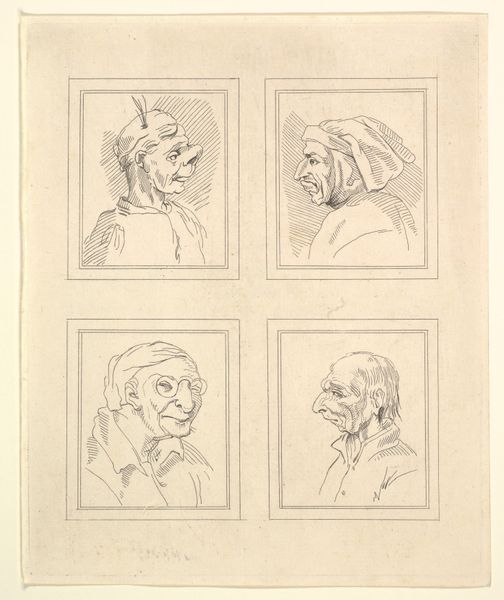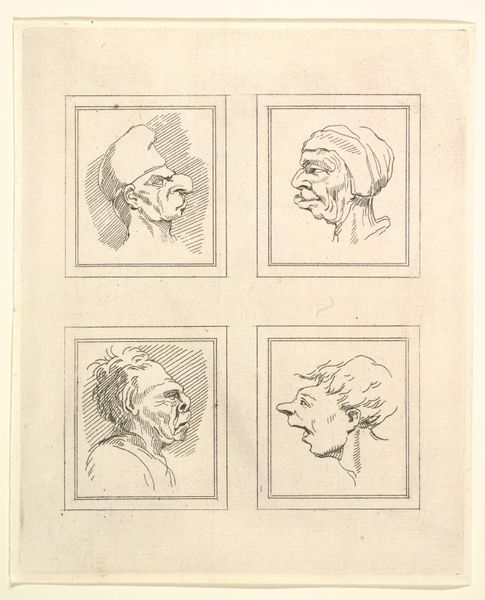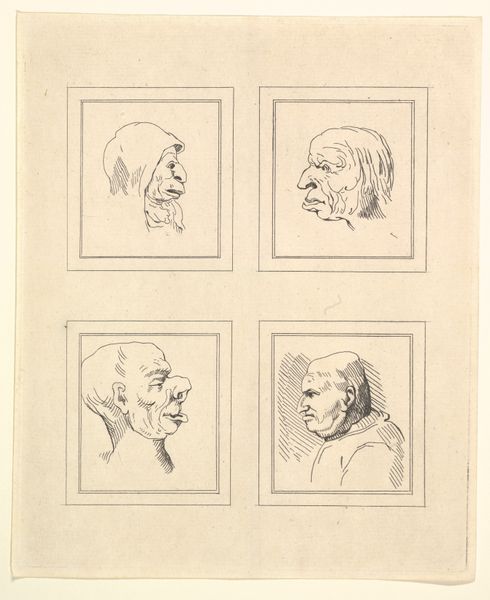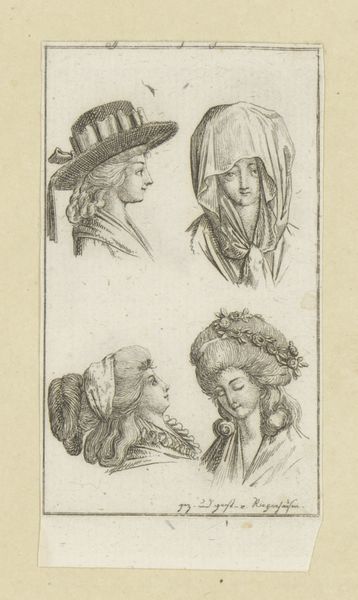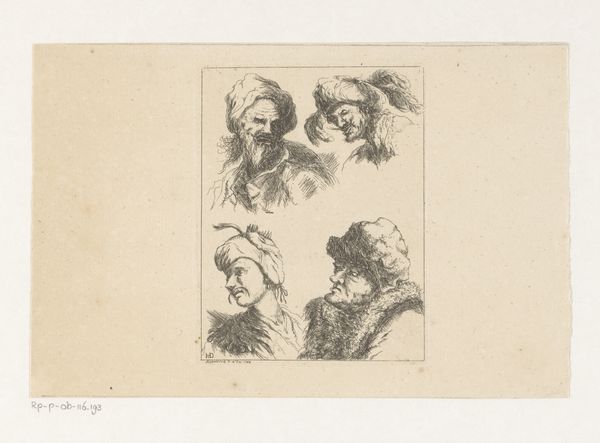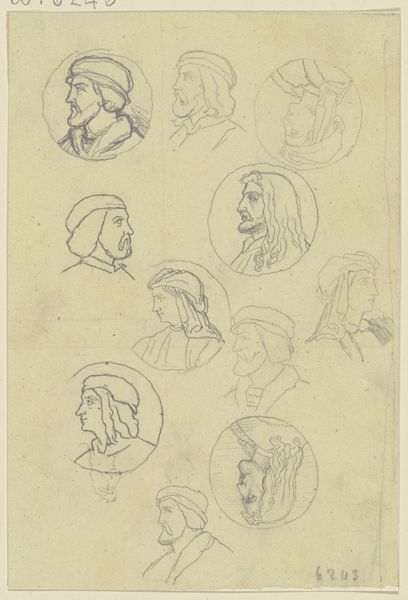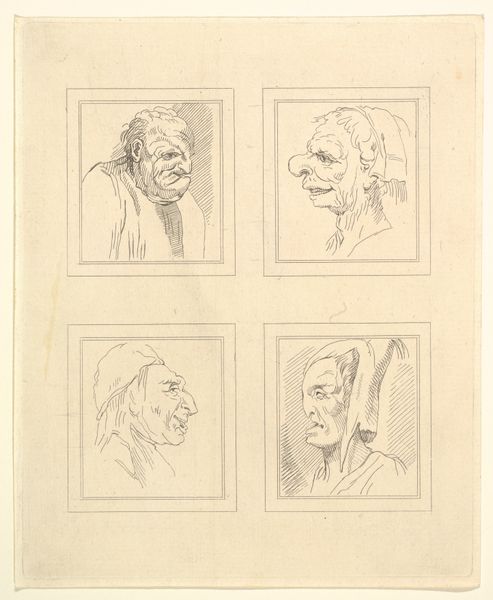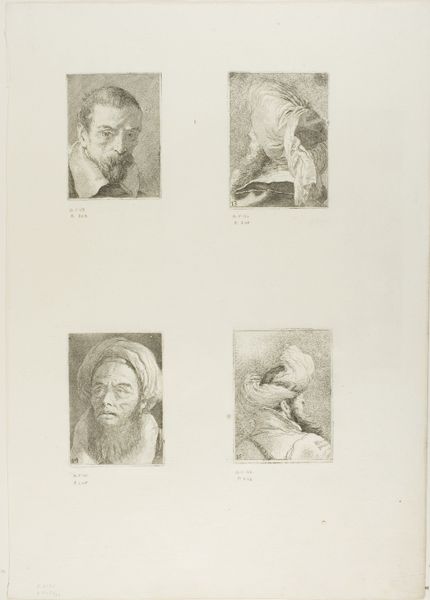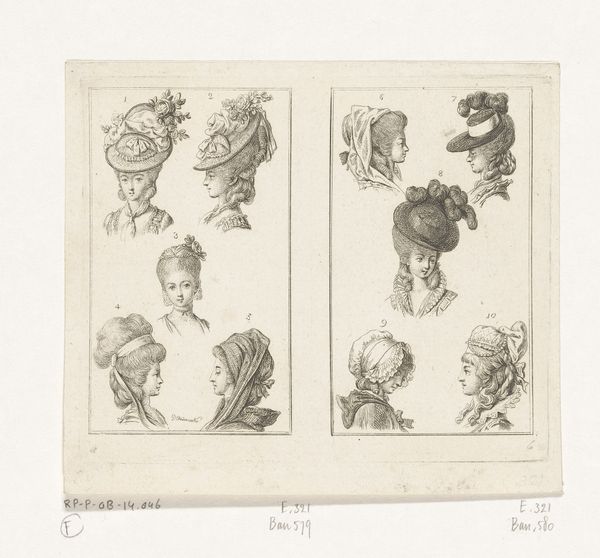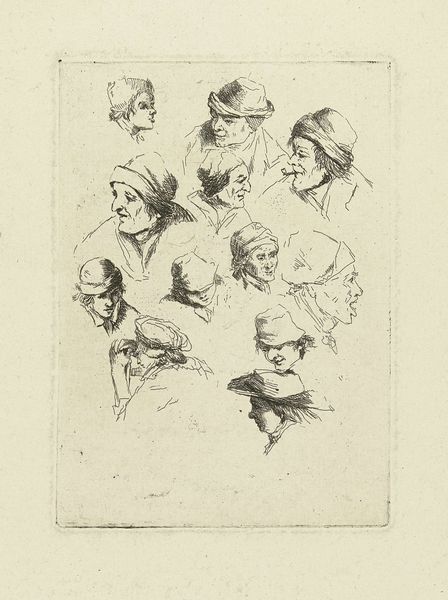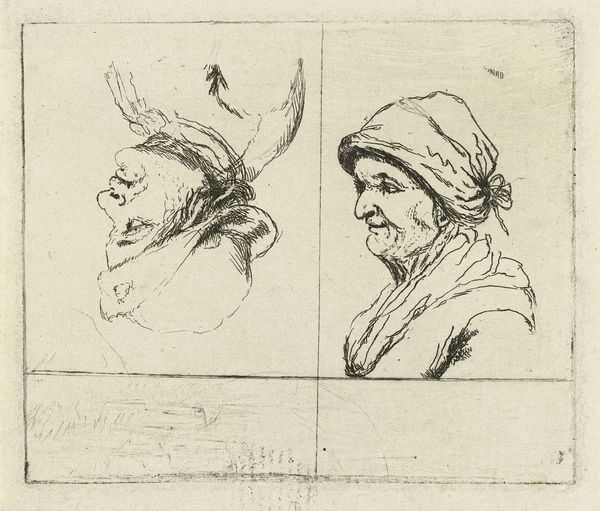
Four Heads (from Characaturas by Leonardo da Vinci, from Drawings by Wincelslaus Hollar, out of the Portland Museum) 1786
0:00
0:00
drawing, print, etching, engraving
#
portrait
#
drawing
#
neoclassicism
# print
#
etching
#
engraving
#
profile
Dimensions: Plate: 7 11/16 x 6 5/16 in. (19.5 x 16 cm) Sheet: 7 15/16 x 6 1/2 in. (20.1 x 16.5 cm)
Copyright: Public Domain
Editor: Here we have Wenceslaus Hollar's 1786 etching and engraving, "Four Heads (from Characaturas by Leonardo da Vinci, from Drawings by Wincelslaus Hollar, out of the Portland Museum)". It's interesting how he groups these rather unusual, caricatured profiles together, almost like a scientific study. What can you tell me about the cultural context that produced these striking images? Curator: It's crucial to remember Hollar is not working in a vacuum. The title points to Leonardo da Vinci, which is key. We're seeing neoclassicism's fascination with the "rediscovery" of the Renaissance. The “grotesque” or caricature was, in this period, linked back to Leonardo's notebooks and used both as an aesthetic and,problematic as it might sound now, as a pseudo-scientific tool. What do you make of this almost… taxonomy of faces, this cataloging? Editor: I guess it seems like an attempt to classify, to understand humanity through physiognomy. But are we meant to see humor, judgment, or something else entirely in these faces? Curator: That's the difficult, crucial question, isn’t it? The engraving reproduces Hollar’s drawings after Leonardo; but how did Hollar understand Da Vinci? How are we positioned to read these “types”? Were these images intended to circulate widely, shaping public perceptions, or were they confined to a more elite, scientific audience? Think about the role the Portland Museum would have played in shaping how these were read at the time. Editor: So it's not just about the image itself, but how its historical display influenced the audience's interpretation and reinforced potential biases. Curator: Precisely! And considering how these images were reproduced, circulated, and consumed reveals much about the power dynamics and cultural values of the late 18th century. Editor: That gives me a lot to think about regarding the complex life of an artwork. Thanks.
Comments
No comments
Be the first to comment and join the conversation on the ultimate creative platform.
